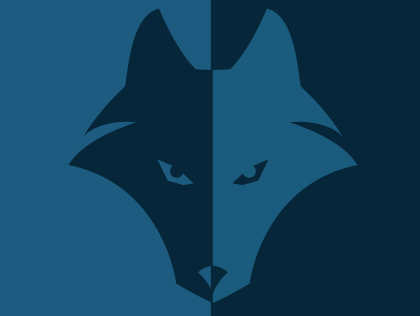News Archives: Cameron Tofer: Making The Game
Friday, September 27th, 2013

Cameron Tofer: Profile
Making the Game
By April Weavell
The real and virtual worlds collided in the basement of Grande Prairie Regional College when some of the most popular and well-known computer game characters known to gamers across the globe were brought to life with pen and paper. The characters were the brainchild of Computer Systems Technology student Cameron Tofer, who attended GPRC from 1994-96, along with five other fellow friends and local developers with whom he collaborated.
The six would go on to work for Edmonton-based game developer BioWare and the personalities they created would become part of the cast of D & D (Dungeons and Dragons) characters in Bulder’s Gate, a game created for PC by BioWare. The fantasy role-playing game sold over 2 million copies worldwide upon its release in 1998, and has now been translated into 16 languages. Computer Shopper magazine touted it as "clearly the best Advanced Dungeons & Dragons (AD&D) game ever to grace a PC screen.”
After an impressive career that took him to California working as Technical Director for Japanese company Namco Hometek, the makers of Pac-Man, then back to Grande Prairie to found HermitWorks Entertainment, today Tofer is COO of development studio Beamdog. Starting the company in 2009 with former BioWare co-founder Trent Oster, the two then formed Beamdog’s development team, Overhaul Games, and are recreating classic games with enhanced features and re-releasing them.
“We take the old games that were really, really good, give them a kick in the pants, and re-release them,” explains Tofer.
Last year, Beamdog and its team of developers who are contracted from countries across the world, released Bulder’s Gate: Enhanced Edition, resurrecting some of the classic’s original characters not just to a new generation of gamers, but to the original players who were highly anticipating the game’s re-release.
“The original Bulder’s Gate had a heck of a following. When we announced we were going to release this enhanced edition, my inbox was flooded with hundreds of emails from across the globe saying ‘thank you’ and telling me how the game had impacted their lives,” says Tofer. “It was pretty crazy.”
Tofer, who was developing games long before he went to college, says he distinctly remembers the moment he decided he was going to make video games.
“I was reading an article in a computer magazine about a guy who made video games and I announced to my mom that I was going to do that,” said Tofer, who was 12-years-old at the time. “Mom told me ‘Great, maybe you’ll make enough money to be able to buy your own printer.’ I thought ‘Wow! My own printer!’”
Tofer says in those early days, gamers were very small in numbers and you did not hear about anyone developing games. When studying at GPRC his friend told him about “some guys in Edmonton who were making games,” and encouraged him to call.
“I was pretty skeptical at first, because I thought to myself ‘No one makes games,’” says Tofer laughing. The “guys” turned out to be BioWare’s founders, and following his last exam at GPRC, he jumped in his packed truck and headed to Edmonton for his first job as a game developer with the company.
Gaming technology was still in its formative years, and Tofer had the opportunity to delve into next generation technology.
“In the early 90s, we [BioWare] were making 3D when it was virtually non-existent,” says Tofer. “When I started at BioWare, there wasn’t even any 3D hardware available for sale. A few companies would send us hardware to test.”
We were using really primitive machines with hardware that we had to figure out how to use. That’s how development was back then,” he adds.
While Tofer says gut passion is an essential element in game development, running a successful development company in today’s highly competitive global market is very risky and takes business savvy. His new company not only overhauls classics, but sells digital games online as well.
“Running a good video game business is very complicated. The amount of technical expertise that we put into these games is huge,” says Tofer. “We just pour so much of ourselves into each project.”
-30-












